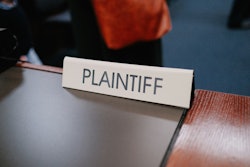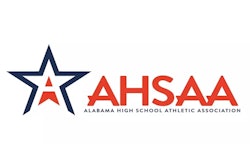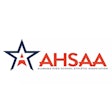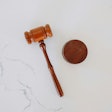
Whenever someone is injured participating in sports, schools and recreation providers often find themselves on the receiving end of a lawsuit. While it is true that accidents happen, and that service providers are not liable for every injury, it is also true that in most cases the lawsuits claim that the school or recreation providers were negligent and that their failure to exercise reasonable care resulted in the person’s injury.
Whether the school or recreation provider wins or loses in court, lawsuits are expensive and risky. Therefore, it is not surprising that about 95 percent of all lawsuits end out of court in some form of pretrial settlement. A good case to illustrate this point, and the need for a pretrial settlement plan, emerged late this summer in Seiler v. Scottsbluff Public Schools.
Slip, fall, break
The plaintiff, Maddie Seiler, was competing in a basketball tournament hosted at a venue within the Scottsbluff (Neb.) Public Schools district. While playing in a game, Seiler slipped on a wet area on the court and broke her ankle. The wet area was caused by a leak in the gymnasium ceiling. As a result of her injury, Seiler and her parents sued Scottsbluff Public Schools for negligence. The school district, however, denied any liability for the injuries and contended there was no negligence on its part or that of its employees. In other words, they claimed that it was an accident that they could not have prevented, even when exercising reasonable care.
To prove that Scottsbluff Public Schools was negligent, Seiler would have to establish four elements: duty, breach of duty, causation and damages.
First, she needed to show that Scottsbluff Public Schools owed her a duty of care. The law recognizes a duty between the two parties if there is a relationship between them. For example, a coach has a duty toward the players on her team. A facility owner has a duty toward those who use the facility and those invited in to watch the events held there. Based on the relationship between Seiler and the school, the court could find that the school district owed her a duty to ensure that the facility was safe and free of any dangers, such as a wet area on the floor.
After establishing that Scottsbluff Public Schools owed her a duty to ensure that the facility was safe and free of any dangers, the second element that Seiler would need to establish in her negligence claim was that the district breached that duty. To conclude that there is a breach of duty, the court must determine whether a “reasonable person” should have discovered the wet area and remedied the potentially dangerous situation before allowing the players to play on the court. Since the district had a duty to ensure that the facility was safe and free of any dangers, yet failed to remove the water from the court, the court could have found that the district breached its duty toward Seiler.
To establish causation, the third element, Seiler would be compelled to show that the school district’s actions or inactions were the actual cause of her injuries. It is important to note that the district is only responsible for those harms that are reasonably foreseeable. In particular, Seiler would have to establish that the school district could have foreseen an athlete slipping and injuring themselves on a wet area on the floor. In her case, it is reasonable to believe that a court could have found that the district’s failure to inspect the floor and clean up any wet areas would cause Seiler, or any athlete using the facility, to suffer an injury.
After establishing the first three elements, Seiler finally would have to establish that she suffered actual damages, which are usually in the form of physical injury to a person or to property. Since Seiler broke her ankle, damages — which would include pain, suffering and medical expenses — would be easy to establish.
The district’s options
With negligence seemingly clearly established, Scottsbluff Public Schools faced three options. One, the district could still allow the case to proceed to court and hope that the court finds in the district’s favor. The problem with this option is that — because of Seiler’s age — many of the defenses that the district might have raised would be moot. As a rule, minors cannot assume the risk of injury when they participate in sports, because they cannot appreciate the risk. In addition, the longer a defendant contests the lawsuit, the greater its legal costs. Finally, while damages are based on the actual damage suffered, leaving the decision in the hands of a jury could prove more costly on that front, as well.
The second option is to drag the case out in court before eventually settling. While this option would allow the school district to delay paying damages, as well as keeping the case away from a jury for a time, it still requires the school district to incur the additional legal costs of discovery and filing pretrial motions as the lawyers seek to build their case. With this option, it is hoped that the added legal costs incurred while discovering the additional information will be offset by a reduction in the final settlement amount.
The third option is for the district to realize that it is liable for the injuries suffered and settle the case out of court as soon as possible. While this option would require the district to pay damages sooner than the first two options, it has the benefit of reducing legal fees and any bad publicity that might result from keeping the case alive.
Faced with these three options, Scottsbluff Public Schools quickly rejected option one. Based on the facts of the case, it is easy to see how a jury could have found the school district negligent for failing to inspect the facility prior to the game. If a school district employee had inspected the facility, he or she would have discovered the wet area and taken the appropriate measures to mitigate the danger it posed. As a result, dragging the case out would have only added to the final costs to the school district.
Having decided that they would more than likely lose in court, the district was faced with option two (dragging the case out and delaying paying any settlement) or option three (settling the case, thereby keeping legal fees and bad publicity to a minimum). With these two options to choose from, the district picked option three and settled the case by paying Seiler $60,000, while not admitting any wrongdoing or liability. The settlement also required that Seiler agree to release and discharge Scottsbluff Public Schools from any lawsuits, grievances, demands or claims — whether tort, contract or otherwise — such as claims of injuries or costs in connection with Seiler’s injuries.
According to published reports, the lump-sum settlement was to be paid by Scottsbluff Public School’s risk liability pool.
Takeaways
What, then, are the takeaways for school and athletic administrators in Seiler v. Scottsbluff Public Schools?
First, it is important to remember that this is a simple slip-and-fall negligence case. If the school district had inspected the facility prior to the game, this injury and lawsuit would not have happened. Therefore, it is important that facility operators understand that they have a duty to provide a safe environment for the activities they are hosting.
The second takeaway is that since most personal injury lawsuits in the sports and recreation field are based on negligence, it is important that sports and recreation organizations have a pretrial settlement plan. As the Seiler case illustrates, there are other options besides going to court. Therefore, when faced with a lawsuit, it is important that administrators understand all the risks and potential costs before deciding whether to risk a trial or negotiate a settlement.




































